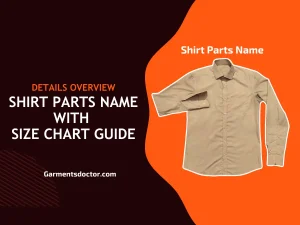Trims and accessories are not the same, Trims are decorative additions to garments, while accessories are separate items that complement clothing. Trims include lace, buttons, and ribbons; accessories encompass bags, shoes, and jewelry.
What are Trims?
Trims are the extra touches we add to clothes. They make clothes look better. You can see them on edges, seams, and buttons. Trims can be ribbons, lace, or even beads. They are part of the clothes and don’t come off when you wash them.
What are Accessories?
Accessories are items you wear with your clothes. They are like extras that make your outfit special. Examples include hats, bags, and jewelry. They are not attached to your clothes, and you can change them to match your style.
Trims and Accessories List
Trims:
- Buttons
- Zippers
- Hooks and Eyes
- Belts and Waistbands
- Cording and Piping
- Ribbons and Bows
- Lace and Embellishments
- Labels and Tags
- Elastic
- Drawstrings and Cords
- Velcro and Hook-and-Loop Tape
- Bias Tape and Facing
- Interlining
- lining
- Labels
- Pads
- Sewing Threads
- Band
- Twill Tap
- D Rings
- Buckles and Sliders
- Eyelets
- Rivet
- Lace trims
- Tassels
- Stopper
- Braid
- String & Cord
- Ribbon
- Garment Motif
Accessories:
- Tissue paper
- Paper Bags
- Polybag
- Mini Polybag
- Muslin Bags
- Hanger
- Pressure Sensitive Tape
- Inner Carton
- Foldable Box
- Garment Clip
- Tag Pin
- Safety Pin
- Stickers
- Hang Tags
- Hang Tag string
- Collar Stay
- Gum Tape
- Butterfly
- Arrow Sticker
- Safety Sticker
Difference Between Trims And Accessories
Trims are the parts of a garment like buttons and zippers that help it function, while accessories are extra items like belts or scarves that make an outfit look more stylish. Here are some differences between trims and accessories.
Trims And Accessories Inspection Procedure
Trims and accessories inspection procedures ensure quality and consistency in the fashion industry. Trims refer to functional components like buttons and zippers, while accessories are decorative items such as belts and jewelry, each requiring distinct evaluation methods to meet industry standards.
Ensuring the quality of these elements is crucial, as they can define the final look and durability of the product.
Pre-inspection Setup
- Preparing the Inspection Space: It is important to have a clean, well-lit area for conducting inspections. Adequate lighting will highlight any defects or inconsistencies in the trims and accessories.
- Gathering Tools and Equipment: Ensure all necessary tools, such as magnifying glasses, measuring tapes, and color swatch charts, are available. These instruments play a pivotal role in detecting flaws and verifying specifications.
Visual Inspection
A meticulous visual inspection is the first line of defense against poor quality. Inspectors should be trained to look for:
- Surface Defects: Scratches, dents, or discoloration on trims and accessories can be detrimental to the aesthetic appeal.
- Color Consistency: The colors should match the designer’s specifications, ensuring that there are no unwanted variations.
- Correct Application: Trims should be securely attached, with no loose threads or misalignments that could affect functionality or design.
Functionality Testing
The functionality of trims and accessories is as important as their appearance:
- Testing Durability: Buttons, zippers, and other functional trims must be tested for their ability to withstand normal wear and tear.
- Ensuring User Comfort: Trims and accessories should not cause discomfort to the wearer, meaning they must be free of sharp edges or rough textures.
Final Inspection Report
After the final inspection, a detailed report is a critical step in the inspection procedure. The report should include:
- A Comprehensive Checklist: Record the findings for each trim and accessory inspected, noting any defects or issues.
- Photographic Evidence: Include photos of defects found, providing a visual reference supporting the written documentation.
- Recommendations: If defects are found, suggest corrective actions to ensure that the final product meets the required quality standards.
By stringently following the inspection procedure for trims and accessories, manufacturers can guarantee that their products not only look good but also perform exceptionally well, meeting both the aesthetic and practical needs of consumers.
Conclusion
Trims and accessories are not the same. Trims are part of clothes. They add detail and can make clothes stronger. Accessories are items you wear with clothes. They show your style and you can change them. Both are important in fashion. They help us look our best and express who we are. Next time you dress up, think about your trims and accessories.
Also Read:
What is The Main Difference Between Apparel and Garment?
What is Garment? Garment Meaning, Definition With Overview
Frequently Asked Questions
What Is Trims And Accessories?
Trims are the finishing textile materials, while accessories are non-textile items used in garment production. Trims include items like lace, buttons, and labels; accessories encompass zippers, hooks, and eyelets.




